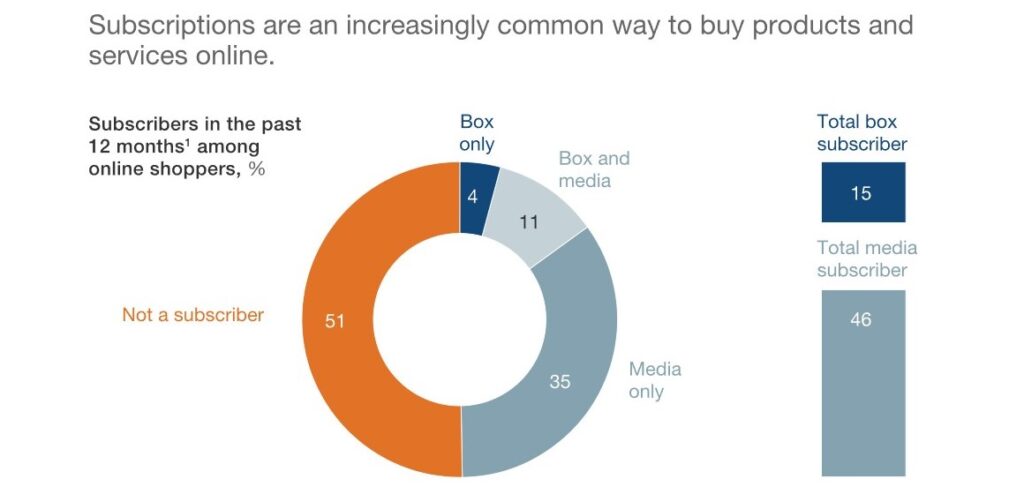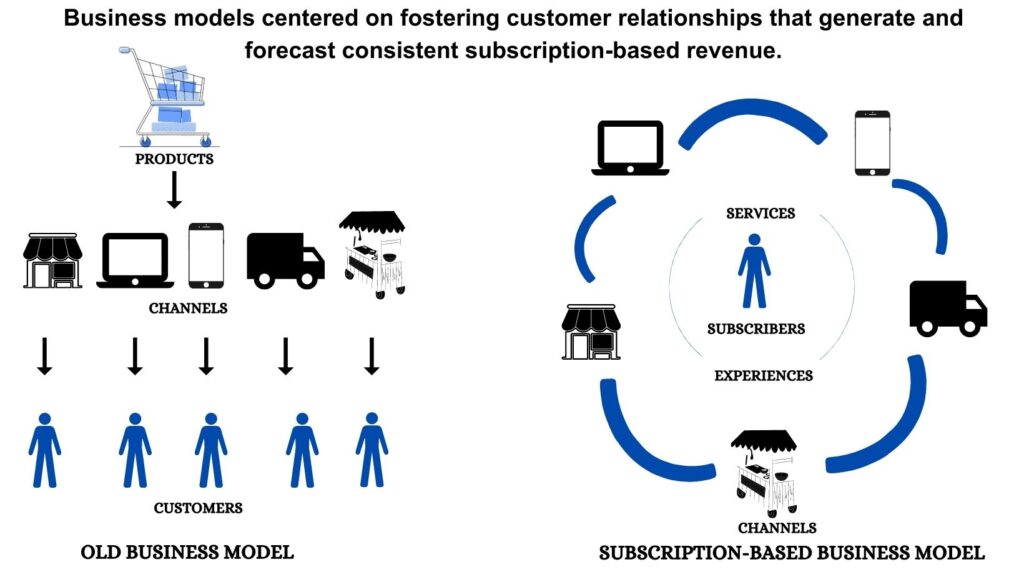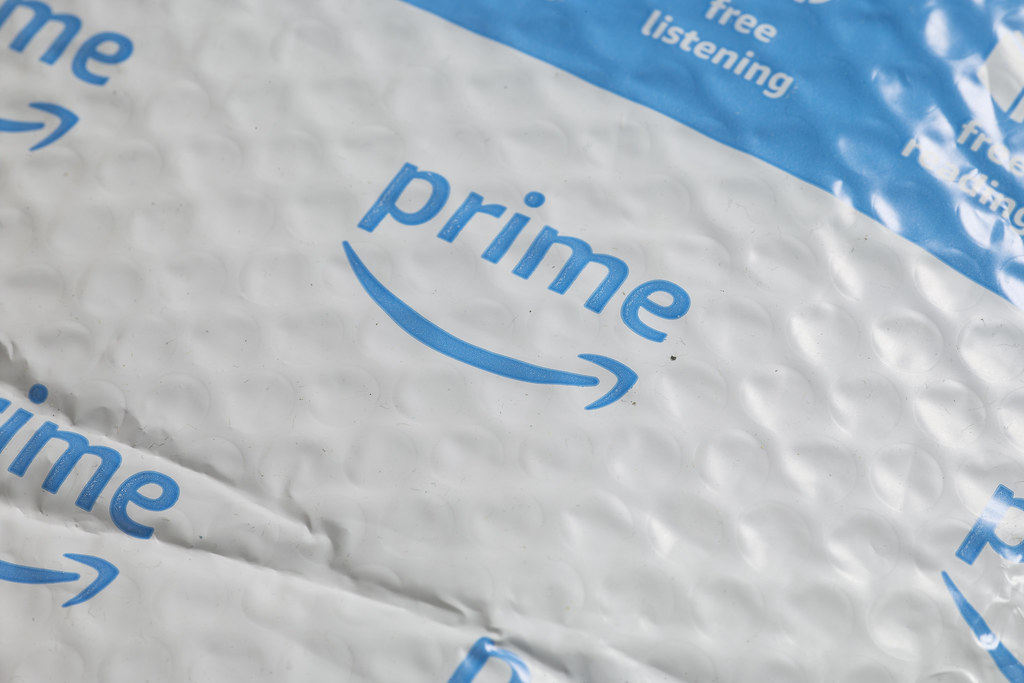Hey there, folks! Have you ever wondered what’s behind the incredible growth of subscription-based e-commerce businesses these days? You’re in the right place! In this blog post, we’ll explore the subscription-based business model and its application in the world of e-commerce. To kick things off, let’s start by defining the subscription-based business model and take a look at a relevant graph that showcases its impact.
A subscription-based business model is where customers pay a recurring fee, usually monthly or annually, to access products or services. In the e-commerce space, this model is typically applied through subscription boxes, membership programs, or digital services.

What’s the secret to their booming growth?
Recurring Revenue and Predictability
One of the most significant advantages of subscription-based e-commerce is the predictable, recurring revenue it generates. Unlike traditional retail models where businesses rely on one-time purchases, subscription models allow companies to forecast their income more accurately. This predictability enables them to make informed decisions about expansion, inventory management, and marketing.
For example, Birchbox, a beauty and grooming subscription box service, has built a loyal customer base by offering personalized, curated product selections. This consistent revenue stream has allowed them to invest in customer experience improvements and expand their product offerings.

Convenience and Personalization
Today’s consumers crave convenience and personalization, and subscription-based e-commerce businesses are delivering just that. These services allow customers to receive curated products or experiences tailored to their preferences, without the hassle of searching for and purchasing items individually.
Take Stitch Fix, for instance, an online personal styling service. Customers fill out a style profile, and a personal stylist curates a selection of clothing and accessories based on their preferences. Subscribers can try on the items at home, keep what they like, and return the rest. This level of personalization and convenience has propelled Stitch Fix to significant success in the fashion industry.

Increased Customer Loyalty and Retention
Subscription-based e-commerce businesses foster long-term relationships with customers, leading to higher retention rates and greater customer loyalty. As subscribers continue to receive value from the service, their trust in the brand grows, and they’re more likely to stick around.
One example is Amazon Prime, which offers a multitude of benefits, including free shipping, access to streaming services, and exclusive discounts. In 2016, 91% of customers who had subscribed to Amazon’s Prime membership for the first year decided to renew their subscription for a second year. That’s way too high, isn’t it? The convenience and value provided by Amazon Prime keep customers engaged and coming back for more, driving the company’s incredible growth.

The Power of Data
Data plays a crucial role in the success of subscription-based e-commerce businesses. By collecting and analyzing customer data, these companies can better understand their subscribers’ preferences, habits, and needs. This information allows them to fine-tune their offerings and marketing strategies, leading to increased customer satisfaction and retention.
For example, Netflix, the popular streaming service, uses data to make informed decisions about the content they produce and recommend to subscribers. This data-driven approach has helped Netflix maintain its position as a dominant player in the streaming industry.
| Category | Description |
|---|---|
| Content Recommendations | Netflix’s algorithm analyzes user viewing habits, ratings, and preferences to provide personalized recommendations. |
| A/B Testing | Netflix continuously tests different user interface designs, features, and content thumbnails to optimize user engagement and retention. |
| Personalization | The platform personalizes the user interface, including content rows, categories, and search results, based on individual preferences. |
| Original Content | Data analysis is used to identify viewer preferences, trends, and gaps in the market to create successful original content. |
| Customer Segmentation | Netflix segments its user base based on demographics, geography, and viewing habits to better understand and target its audience. |
| Churn Prediction | Machine learning models are used to predict user churn and identify potential reasons, allowing Netflix to take proactive measures to improve retention. |
Market Adaptability
In today’s fast-paced and ever-changing economy, the ability to adapt is vital. Subscription-based e-commerce businesses can quickly pivot their offerings based on market trends, customer feedback, and emerging technologies. This flexibility enables them to stay ahead of the competition and continue to deliver value to their subscribers.
Blue Apron, a meal kit subscription service, is an excellent example of market adaptability. They’ve expanded their offerings to include plant-based and wellness-focused meal options, catering to the growing demand for healthier, more sustainable food choices.

Wrapping up
Subscription-based e-commerce businesses are booming in today’s economy due to their ability to provide recurring revenue, convenience, personalization, customer loyalty, data-driven insights, and market adaptability. By understanding and leveraging these factors, businesses can tap into the tremendous potential of this thriving industry. So, whether you’re an entrepreneur looking to launch a subscription-based business or a consumer seeking the next great subscription service, there’s never been a better time to dive in!
